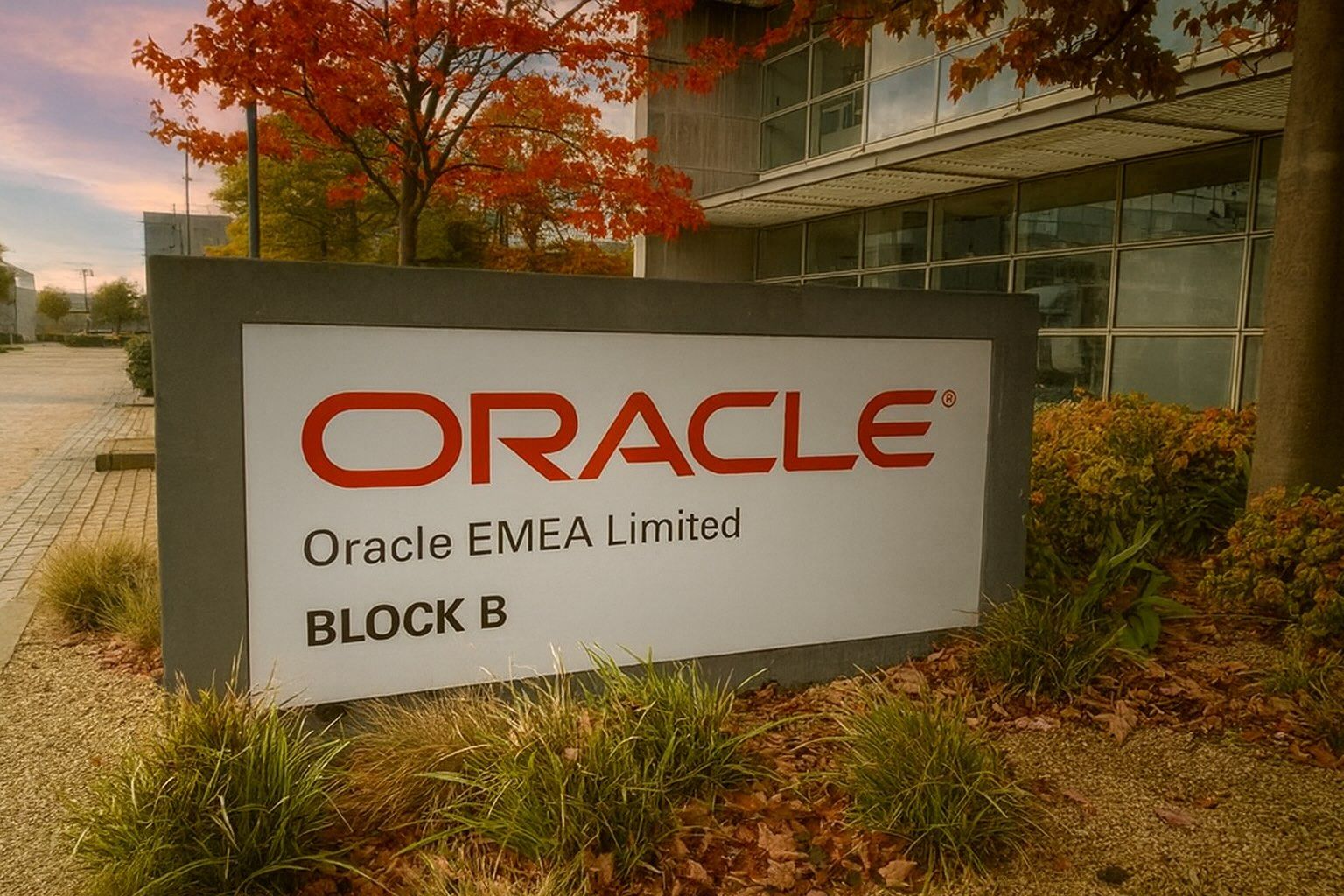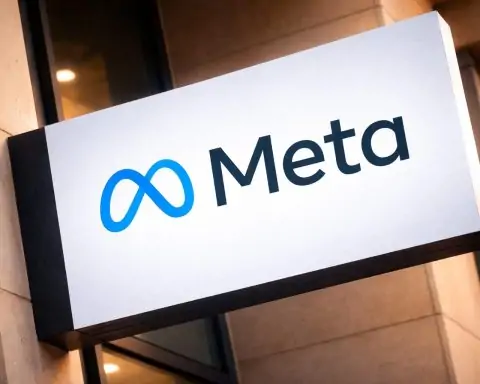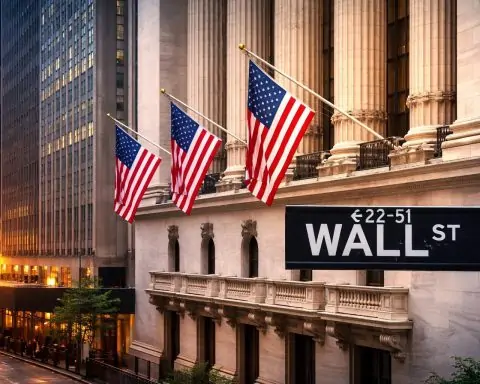Oracle has suddenly become the poster child for AI exuberance turning into anxiety.
On Friday, 14 November 2025, a wave of fresh reporting and analyst commentary paints a stark picture: Oracle’s huge, debt‑fuelled artificial‑intelligence buildout – centered on a $300 billion cloud deal with OpenAI – has triggered a 30–33% share price slide from its September peak, rattled credit markets, and forced investors to rethink how much risk they’re really taking when they buy into the AI infrastructure boom. [1]
At the same time, a fierce debate has opened up on Wall Street: is Oracle a high‑beta, overleveraged AI bubble play, or a temporarily battered way to gain leveraged exposure to long‑term demand for AI compute?
Here’s what’s new today – and why it matters.
Oracle’s AI-fuelled rally has flipped into a rout
Oracle’s stock has done a full U‑turn in just two months.
- After announcing a massive jump in its AI and cloud backlog in September, Oracle shares surged about 36% in a single day, pushing the stock to record highs near $345. [2]
- Since then, the mood has soured dramatically. As of Thursday’s close (13 November), Oracle is down roughly one‑third from those highs, trading in the low $220s and extending a steep slide that has erased more than 30% of the company’s value. [3]
A new piece from tech outlet The Tech Buzz today frames the move as a classic over‑exuberant AI trade coming undone: Wall Street bid up Oracle on sky‑high expectations for its AI cloud revenue, then started doing the math on how much debt and capital expenditure those promises actually require. [4]
That re‑rating didn’t just hit Oracle. The same article notes that Nvidia and Broadcom joined Oracle in leading a sell‑off that pushed the Nasdaq down 2.29%, its worst session since 10 October, while the Dow fell 1.65% and the S&P 500 lost 1.66% on Wednesday. [5]
In other words: this isn’t just an Oracle story – it’s a pressure test for the entire AI trade.
FT: Oracle hit hardest in tech sell-off over its huge AI bet
The Financial Times put Oracle front and center today with the headline “Oracle hit hard in Wall Street’s tech sell-off over its huge AI bet.” [6]
Key points emerging from FT‑linked coverage and related credit‑market reporting:
- Share price underperforms peers: Oracle has dropped close to 30% over the past month, roughly twice the decline of Meta, making it one of the worst‑hit large‑cap tech names in the AI shake‑out. [7]
- Enormous OpenAI commitment: Oracle has agreed to sell $300 billion worth of computing power to OpenAI between roughly 2027 and 2032, one of the biggest infrastructure contracts in tech history. [8]
- Debt already ballooning: Various analyses put Oracle’s current debt load near $95–100 billion, up sharply after an $18 billion bond sale and a large term loan raised in late 2025. [9]
- Debt could almost triple: One widely cited estimate suggests net adjusted debt could reach around $290 billion by 2028 if Oracle fully builds out the data centers implied by its AI contracts. [10]
Together, these numbers explain why the FT describes Oracle as being hit harder than its peers: investors are suddenly focused less on AI narratives and more on balance-sheet reality.
‘AI sentiment is waning’: Wall Street cools on Oracle’s buildout
The CNBC story referenced heavily across today’s coverage – “Wall Street cools on Oracle’s buildout plans as debt concerns mount: ‘AI sentiment is waning’” – captures the psychological turning point. [11]
Although the full article is being amplified mainly via aggregators, a few themes are clear:
- From AI darling to funding worry: MarketBeat’s “Why Is Oracle Dropping Today?” note summarizes that investors are increasingly uneasy that Oracle’s AI/data-center expansion is being financed with rising debt, just as credit conditions remain uncertain. [12]
- Free cash flow under the microscope: KeyBanc analyst Jackson Ader is quoted (via TechBuzz and CNBC) warning that Oracle is expected to generate the least free cash flow among major cloud GPU providers, a worrying trait for a company committing $300 billion over five years largely to a single AI customer. [13]
- Macro headwinds don’t help: With the Federal Reserve missing October’s employment and inflation data due to a “data blackout”, rate‑cut odds for December have fallen from about 95% to a coin toss, raising the risk that borrowing stays expensive just as AI infrastructure capex peaks. [14]
Put simply, what looked like a clean AI growth story a few months ago now looks like a leveraged macro bet on both interest rates and sustained AI demand.
Top analyst: Oracle’s AI push is a ‘bad business’ with ‘very low margins’
If the FT and CNBC captured the market’s mood swing, Gil Luria of D.A. Davidson supplied the sharpest soundbite.
In an interview highlighted today by Benzinga (and syndicated on Yahoo Finance), Luria blasted Oracle’s high‑profile AI strategy as “bad behavior” and an “irresponsible investment.” [15]
Here’s what he’s worried about:
- Borrowing to serve risky customers: Luria argues that Oracle is “borrowing to provide capacity for startups,”contrasting this with Microsoft, Amazon and Google, which “have all the customers, have cash on hand” and are building data centers for demand that is largely presold. [16]
- Margin compression: Oracle’s legacy businesses boast gross margins around 80%, but the company has touted 30–40% gross margins on new AI infrastructure deals – numbers Luria calls a “bad business with very low margins.” [17]
- The $455 billion backlog problem: Oracle’s AI‑inflated backlog of roughly $455 billion is a core bullish talking point. Luria, however, says portions of that backlog – particularly headline‑grabbing OpenAI commitments – look more like flexible options than firm take‑or‑pay contracts and warns against treating them as locked‑in revenue. [18]
His conclusion: the $100+ “AI premium” that investors added to Oracle’s share price earlier this year has now been “given back” – and, in his view, that reset “makes a lot of sense.” [19]
Michael Burry and Short Sellers smell an AI bubble
Adding fuel to today’s skepticism, Big Short investor Michael Burry has disclosed a roughly $1 billion short position against the AI trade, with parts of that bet reportedly focused on Meta and Oracle. [20]
According to a recap of Burry’s thesis carried by GoldSeek and flagged in MarketBeat’s Oracle news feed:
- Burry argues that AI‑related accounting at some megacaps is “hiding the brutal truth” – especially around how data‑center investments and AI infrastructure costs are depreciated or capitalized. [21]
- He views Oracle and certain peers as leveraged plays on AI hype whose reported earnings don’t fully reflect the long‑term cost of their infrastructure promises.
Short‑seller Jim Chanos has also resurfaced in this debate, questioning Oracle’s $300 billion OpenAI deal, which he points out does not start until 2027, and asking how a still‑loss‑making startup could realistically fund a $60 billion per year capacity commitment. [22]
The combined effect: Oracle has become a litmus test for whether the AI trade is a durable secular story or a classic late‑cycle bubble.
Credit markets flash warning: “data center debt” in focus
Equity investors aren’t alone in worrying.
Recent coverage in The Economic Times, The Register and other outlets shows Oracle’s debt and credit risk becoming a story in its own right:
- Net adjusted debt could approach $290 billion by 2028, according to some analyst projections – nearly tripling from around $100 billion today. [23]
- Credit default swap spreads on Oracle debt have spiked to two‑year highs, signaling that bond investors are demanding more compensation to hold the company’s paper. [24]
- One estimate suggests Oracle may need to borrow roughly $100 billion over the next four years to fully support the $300 billion OpenAI contract, depending on how aggressively it builds data centers. [25]
Bank of America, in a separate AI‑macro report this week, drew a stark contrast: Meta carries about $37 billion in debt with over $60 billion in cash, while Oracle’s debt pile is approaching $96 billion after recent bond and loan financings, with far less balance‑sheet flexibility. [26]
Those numbers help explain why Oracle is being singled out even though rivals are also pouring money into AI data centers.
Bulls push back: ‘Slump looks overdone’ and 75% upside?
Despite the gloomy headlines, not everyone is heading for the exits.
A TipRanks piece today highlights that several analysts still see the recent slide as a buying opportunity: [27]
- Mizuho’s Siti Panigrahi reiterated a Buy rating and a $400 price target, implying more than 75% upside from current levels.
- Panigrahi cites Oracle’s $455 billion backlog, built on multi‑year contracts to rent AI server capacity to hyperscalers and enterprises, as a key support for long‑term growth. [28]
- Across Wall Street, 25 of 37 analysts tracked still rate Oracle a Buy, with an average 12‑month price target around $354, or roughly 50–60% above today’s price. [29]
MarketBeat’s sentiment breakdown also notes several offsetting positives:
- A new 5G standalone core deal with Transatel, showcasing Oracle’s ability to win telecom and edge‑computing workloads. [30]
- Ongoing AI‑infrastructure tailwinds, including Anthropic’s planned $50 billion U.S. data‑center investment, which could indirectly benefit Oracle as hyperscalers and AI labs scramble for GPU capacity. [31]
The bullish case boils down to this: yes, the debt and execution risks are real, but if the AI contracts convert into cash flow, today’s selloff could mark a painful but temporary reset rather than the end of Oracle’s AI story.
Leadership churn and insider selling complicate the narrative
Another thread running through recent coverage is governance and leadership risk:
- In September, Oracle appointed Clay Magouyrk and Mike Sicilia as co‑CEOs, moving long‑time CEO Safra Catz to executive vice chair. Both new CEOs are closely tied to Oracle’s AI and cloud push. [32]
- Separate reporting this summer showed Catz leading U.S. insider stock sales with roughly $2.5 billion in Oracle shares sold in the first half of 2025, fueling questions about how confident she really is in the risk profile of the AI pivot. [33]
For skeptical investors, heavy insider selling plus a leadership transition at exactly the moment Oracle is levering up to fund its largest ever expansion is not an ideal combination.
Is this the end of the AI boom – or just a reset?
One reason the Oracle story has become so central is that it sits at the intersection of three big 2025 narratives:
- The AI infrastructure super‑cycle
- Deals like OpenAI’s $300 billion Oracle contract and Anthropic’s $50 billion U.S. data‑center plan suggest AI compute demand remains enormous. [34]
- Bubble fears and macro uncertainty
- Articles and research notes this week warn that the Nasdaq 100 is on track for its worst November since 2008 as AI‑linked names lead the market lower, while the Fed is “flying blind” without key data. [35]
- Competing narratives on an AI ‘bubble’
- On one side, critics like Burry, Chanos and Luria argue that investors have underestimated the capital intensity and low margins of AI infrastructure. [36]
- On the other, FT columnist Richard Waters argues that talk of an imminent AI crash is overblown, pointing out that we still face a shortage of AI compute capacity, not a glut – hardly classic bubble conditions. [37]
Where does that leave Oracle?
For now, the market verdict is harsh: a 30–33% drawdown in a month, heavy credit‑market stress and mounting short interest. [38]
But the outcome will ultimately hinge on two questions:
- Can Oracle turn its $455 billion backlog into high‑quality, cash‑generating contracts rather than thin‑margin, debt‑financed capacity for a handful of risky AI startups?
- Will AI demand remain strong enough, for long enough, to justify one of the biggest infrastructure bets in tech history?
Until investors get clearer answers – likely starting with Oracle’s next earnings update in December – the company will remain ground zero in the debate over whether today’s AI sell‑off is a healthy reset or the start of something much bigger.
References
1. www.techbuzz.ai, 2. www.tipranks.com, 3. www.techbuzz.ai, 4. www.techbuzz.ai, 5. www.techbuzz.ai, 6. www.ft.com, 7. www.ft.com, 8. www.wsj.com, 9. finance.yahoo.com, 10. m.economictimes.com, 11. www.marketbeat.com, 12. www.marketbeat.com, 13. www.techbuzz.ai, 14. www.techbuzz.ai, 15. www.benzinga.com, 16. www.benzinga.com, 17. www.benzinga.com, 18. www.benzinga.com, 19. www.benzinga.com, 20. www.marketbeat.com, 21. goldseek.com, 22. www.benzinga.com, 23. m.economictimes.com, 24. m.economictimes.com, 25. www.theregister.com, 26. finance.yahoo.com, 27. www.tipranks.com, 28. www.tipranks.com, 29. www.tipranks.com, 30. www.marketbeat.com, 31. www.marketbeat.com, 32. www.barrons.com, 33. www.gurufocus.com, 34. www.wsj.com, 35. www.benzinga.com, 36. www.benzinga.com, 37. www.ft.com, 38. www.techbuzz.ai










